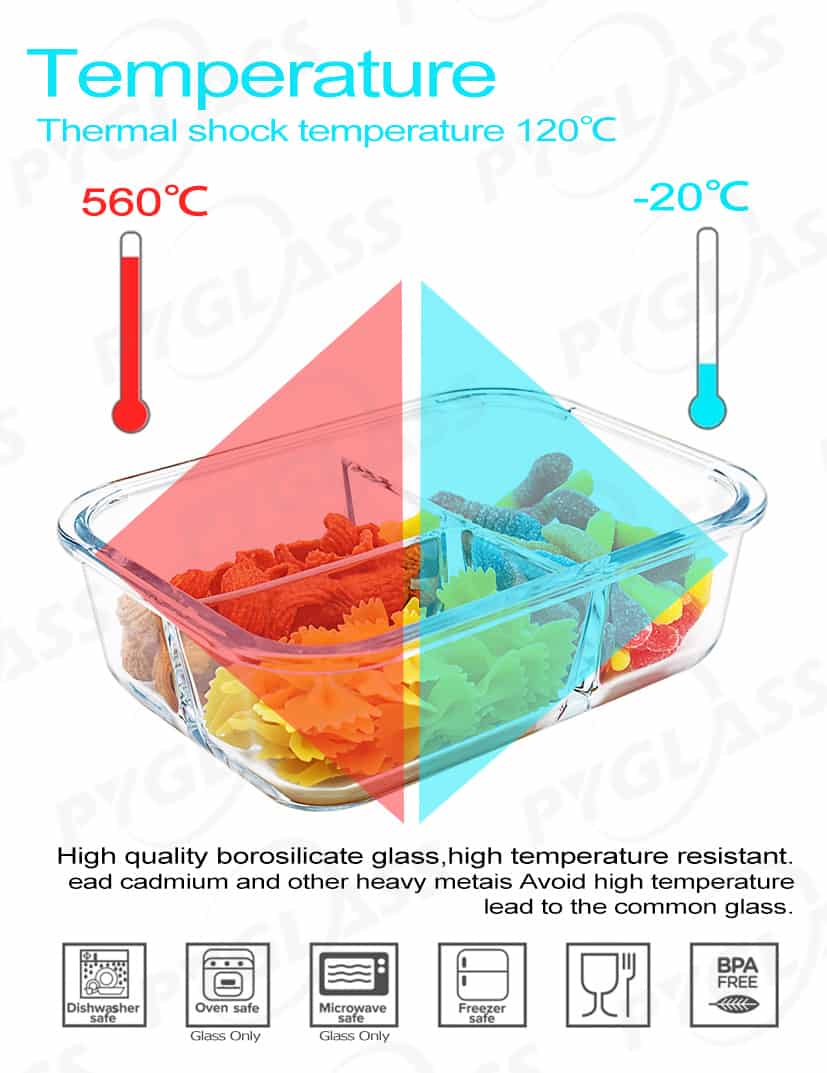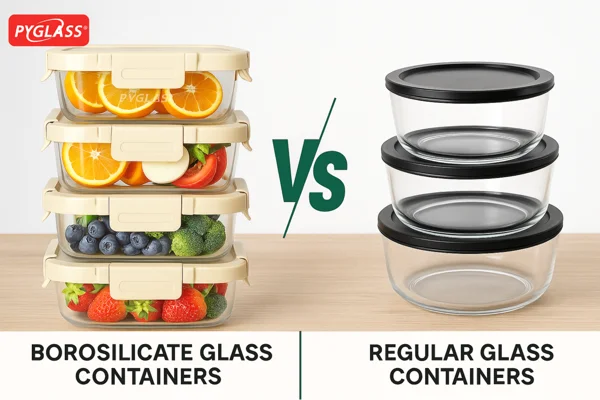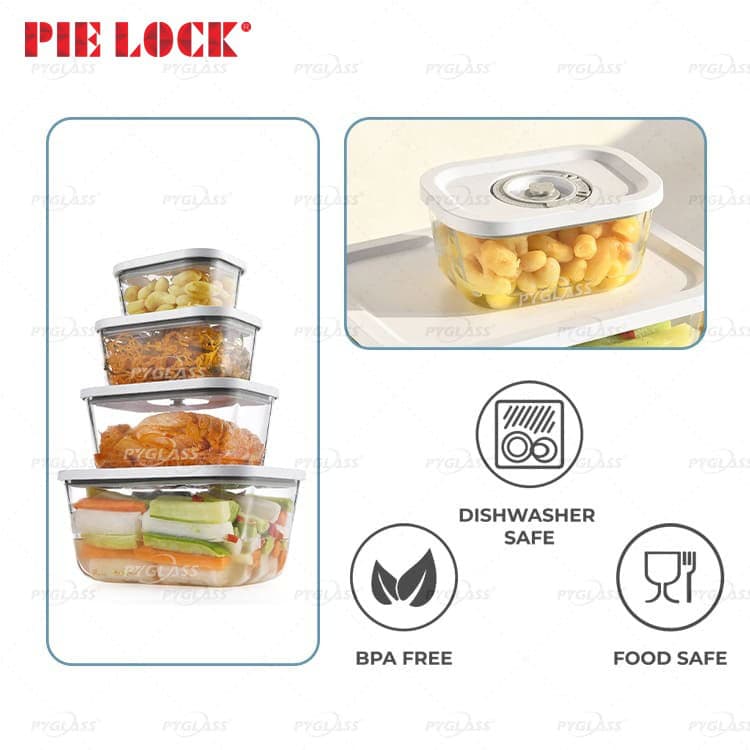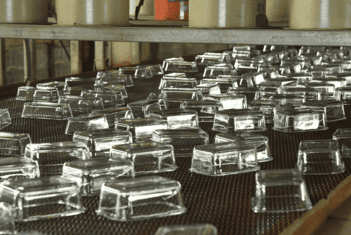Cheap plastic cracks. Regular glass breaks. Some materials even release toxins. Many families and businesses ask: is borosilicate glass safe? The truth is that high borosilicate glass is the healthier, heat-resistant solution for kitchens and retail shelves.
High borosilicate glass is non-toxic, high-temperature resistant, and ideal for the best glass food containers in homes, restaurants, and B2B wholesale markets.

What is high borosilicate glass and why is it different?
Most kitchen glassware is made from soda-lime glass 1{#ref-1}, which is cheaper but fragile. High borosilicate glass is produced with silica and boron oxide, making it more heat-resistant and stronger.
It can handle extreme temperature changes, making it safe for ovens, microwaves, dishwashers, and freezers.

Soda-Lime vs High Borosilicate Glass
| Feature | Soda-Lime Glass | High Borosilicate Glass |
|---|---|---|
| Heat Resistance | Up to 120°C | Up to 400°C |
| Thermal Shock Resistance 2{#ref-2} | Poor | Excellent |
| Safety for Food | Risk of toxins | 100% Safe, non-toxic |
| Typical Uses | Disposable jars | Bakeware, food containers |
Is borosilicate glass toxic or safe for daily food use?
Many consumers worry about safety: is borosilicate glass toxic? The answer is no.
High borosilicate glass is BPA-free, lead-free 3{#ref-3}, and does not release harmful chemicals—even at high heat. That makes it one of the safest choices for cooking, storing, and reheating food.

Why Families and Brands Choose It
| Concern | Plastic / Soda-Lime | High Borosilicate Glass |
|---|---|---|
| BPA & Toxins | Common | Absent |
| Acidic Food Reaction | Risky | Stable |
| Stains & Odors | Frequent | None |
| Consumer Confidence | Low | Premium, trusted |
For glassware suppliers and manufacturers, safety certification (FDA, LFGB, DGCCRF) 4{#ref-4} is essential to win consumer trust. PYGLASS products meet all of these standards.
Best glass food containers: why borosilicate leads the market?
Families want durable containers. Retailers want products that last. This is why high borosilicate glass containers are often ranked as the best glass food containers 5{#ref-5} worldwide.
They are heat-resistant, long-lasting, and stylish—perfect for B2B wholesale and custom glass container orders.

Real Benefits in Kitchens and Retail
- Heat-resistant: withstands -20°C to 400°C
- Leak-proof designs for meal prep
- Dishwasher and microwave safe
- Clear and modern appearance for retail packaging
- Stackable and space-saving for logistics
Many wholesale buyers 6{#ref-6} now request borosilicate glass because it reduces return rates, improves customer reviews, and builds eco-friendly brand image.
Borosilicate vs Pyrex: what’s the difference?
A common question from buyers: borosilicate vs Pyrex—are they the same?
- Pyrex 7{#ref-7} is a brand that once used borosilicate, but in some markets now uses soda-lime glass.
- High borosilicate glass is a material type, always heat-resistant and safe.
If you need guaranteed durability and safety, always confirm material—not just the brand name.
| Aspect | Pyrex (varies by region) | High Borosilicate Glass 8{#ref-8} |
|---|---|---|
| Material | Soda-lime in US, borosilicate in EU | Always borosilicate |
| Heat Resistance | 150–200°C | Up to 400°C |
| Safety | Depends on material | Non-toxic, certified |
| Best for B2B Buyers | Not consistent | Reliable, wholesale-ready |
For B2B glassware suppliers and wholesale distributors, transparency about material is key. PYGLASS guarantees only high borosilicate glass.
Why wholesalers and B2B buyers prefer borosilicate glass?
The global market is shifting. Families demand eco-friendly products. Retailers want suppliers who guarantee compliance and innovation.
For B2B, wholesale, and custom glass containers, high borosilicate is the best choice for balancing safety, cost, and brand value.

Key Reasons B2B Buyers Choose Borosilicate
| Factor | Benefit for Buyers and Retailers |
|---|---|
| High-temperature resistant | Safe for oven-to-freezer transitions |
| Eco-friendly & recyclable 9{#ref-9} | Meets sustainability trends |
| Lower return rates | Fewer breakages, less customer complaints |
| Compliance ready | FDA, LFGB, DGCCRF certifications |
| Wholesale & customization | Flexible options for brands |
As a glassware manufacturer and supplier 10{#ref-10}, PYGLASS serves more than 50 brands across North America, Europe, and Latin America, offering reliable production, custom solutions, and wholesale supply.
Conclusion
High borosilicate glass is not only safer and heat-resistant but also the smarter choice for families and businesses. It outperforms plastic, beats soda-lime, and offers more consistency than Pyrex.
For B2B buyers, wholesalers, and custom glass container projects, choosing a trusted glassware supplier like PYGLASS ensures healthier products, stronger brands, and greener business growth.
Footnotes
1. An explanation of soda-lime glass properties and common applications from an industry supplier. ↩︎
2. Learn about thermal shock resistance from the European Container Glass Federation. ↩︎
3. Official information from the U.S. FDA on substances permitted in food contact applications. ↩︎
4. An overview of food contact material testing from TÜV SÜD, a global certification body. ↩︎
5. Explore a variety of high-quality borosilicate glass food containers for home and retail. ↩︎
6. Connect with a B2B supplier for wholesale inquiries on glass food storage containers. ↩︎
7. An article explaining the history of Pyrex and its material change from borosilicate glass. ↩︎
8. Discover the unique properties of borosilicate glass from SCHOTT, a leading global manufacturer. ↩︎
9. Facts about the benefits and sustainability of glass recycling from the Glass Packaging Institute. ↩︎
10. A look into the manufacturing capabilities of a dedicated glassware factory for B2B partners. ↩︎

2 thoughts on “Is Your Kitchen Glassware Secretly Dangerous? Why High Borosilicate is the Safer, Smarter Choice”
Pingback: Terrific write ups, With thanks!
Thank you for your admire!